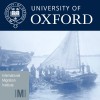THEMIS: Developing migration systems in Europe and Asia
As globalisation is accelerated in twenty-first century, surely migration systems have been emergent and developed in the globe. But, it is still ambiguous what differences migration systems hold and through what mechanism they appear.
Among various factors and actors, we cannot ignore the role of the state. In one aspect, the state seems to be an inhibitor against emergence of migration systems. Not only Western countries but also non-Western countries are struggling to handle massive international migration and to reconcile social issues appearing from it. But in the other aspect, the state takes a role of facilitator for migration systems. It tends to select migrants who can enter and/or stay in the society. What differences of migration systems does the state create? What mechanism does it produce, with relating to the other state, social groups, migrants and the society?
To these questions, this paper will take two approaches. Firstly, we should examine not only Western countries but also non-Western countries. With comparison to Western world, much less research has explored situations of migration in non-Western world. Asia is not an exception, although it has been remarkably shifting to multicultural societies. So, we will undertake comparative study of Europe and East Asia, such as Japan, South Korea and Taiwan, to examine differences and factors of migration systems.
Secondly, some theoretical perspective is needed to examine the questions. One theoretical key concept is citizenship. To create or limit migration systems, the state utilises citizenship of migrants composed of status, rights and duties, and identity. Then, with reference to a theoretical model called the Hammar=Koido=Tarumoto model (the HKT model), we will approach mechanisms of development of migration systems.
This exploration will lead us to comprehensive understanding emergence and development of migration systems which has been evolving all over the world.




